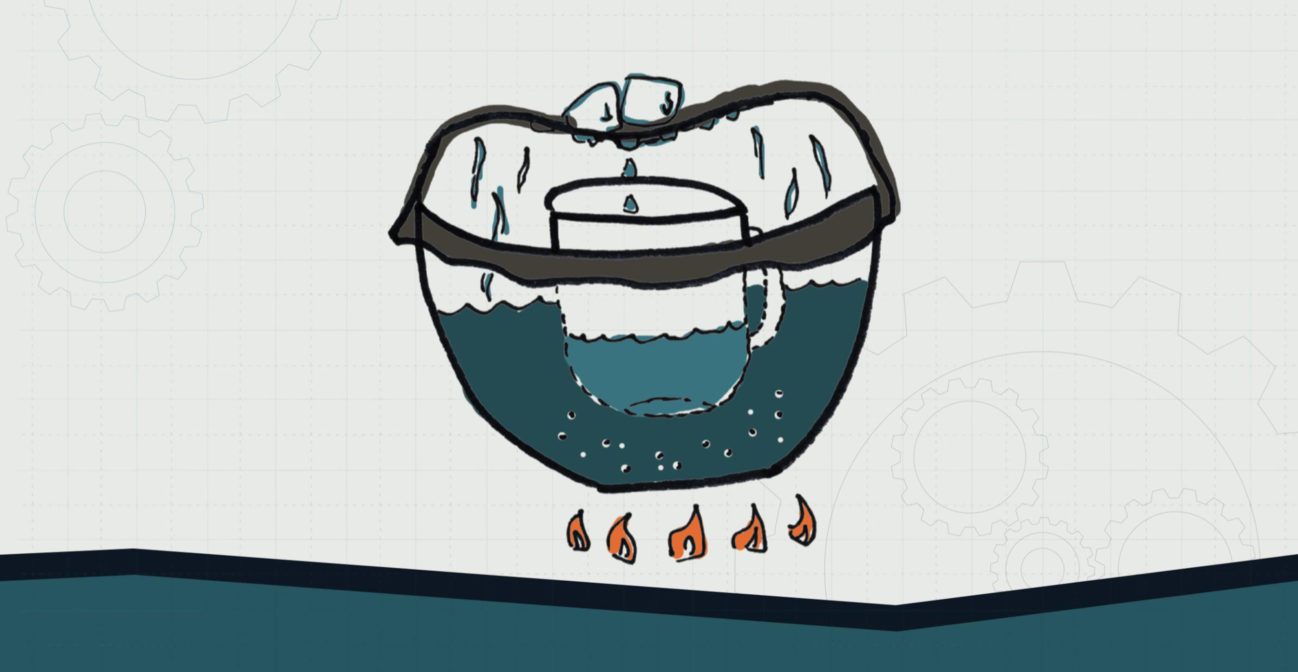Join us for conversations that inspire, recognize, and encourage innovation and best practices in the education profession.
Available on Apple Podcasts, Spotify, Google Podcasts, and more.

MIDDLE SCHOOL – LEVEL 1
Salt water makes up the majority of water on the planet. Imagine if there were a way to convert that salt water to drinkable water. Well, there is! Salt water is often desalinated to produce water for human consumption and irrigation. In this project, students will explore the properties of salt water while learning how to remove the salt, leaving drinkable water behind.
MATERIALS NEEDED:
❏ Bowl
❏ Large pot
❏ Salt
❏ Spoon
❏ Water
❏ Coffee mug
❏ Tin foil
❏ Ice
❏ Stove
DIRECTIONS:
Inside the pot, you will notice that the coffee mug now has water in it, and there is much less water in the saltwater area. Ask your students to dip a finger in their water from the mug and taste, then do the same with the salt water. The water in the mug has been desalinated through the process of evaporation. The clean water condenses on the tinfoil and rains back down into the mug.
OBJECTIVE: Students will be able to construct scientific explanations of photosynthesis and its role in cycling matter and energy.
ESSENTIAL QUESTION(S):
1. Students conduct the experiment by mixing salt in water
2. Conclude whether or not a new substance is formed or if it is a physical change
a. Reason from observations
3. Conduct the reverse process, re-salinating the water.
a. Is the process reversible?
b. Is it a chemical or physical change?
4. Evaluate
a. Students experimental process
b. Interpretation of data
c. Reasoning from evidence
1. Since the activity above is a physical change
a. Students should produce a model (NGSS use of “model”) of the molecular components to explain what happens when mixing salt and water and/or desalinization
2. Students use the PhET simulation
a. https://phet.colorado.edu/en/simulation /legacy/soluble-salts
1. Students revise their model based on the PhET simulation
2. Evaluate
a. Interpretation of data
b. Model of explanation of salt and water
NGSS CONNECTION:
MS-PS1-2. Analyze and interpret data on the properties of substances before and after the substances interact to determine if a chemical reaction has occurred.
COMMON CORE CONNECTION:
ELA/Literacy
RST.6-8.1 Cite specific textual evidence to support analysis of science and technical texts, attending to the precise details of explanations or descriptions.
RST.6-8.7 Integrate quantitative or technical information expressed in words in a text with a version of that information expressed visually (e.g., in a flowchart, diagram, model, graph, or table).
Mathematics
MP.2 Reason abstractly and quantitatively.
6.RP.A.3 Use ratio and rate reasoning to solve real-world and mathematical problems.
6.SP.B.4 Display numerical data in plots on a number line, including dot plots, histograms, and box plots.
6.SP.B.5 Summarize numerical data sets in relation to their context.
6.NS.C.5 Understand that positive and negative numbers are used together to describe quantities having opposite directions or values (e.g., temperature above/below zero, elevation above/below sea level, credits/debits, positive/negative electric charge); use positive and negative numbers to represent quantities in real-world contexts, explaining the meaning of 0.
DOK:
Level 2: Concept
Level 3: Strategic Thinking